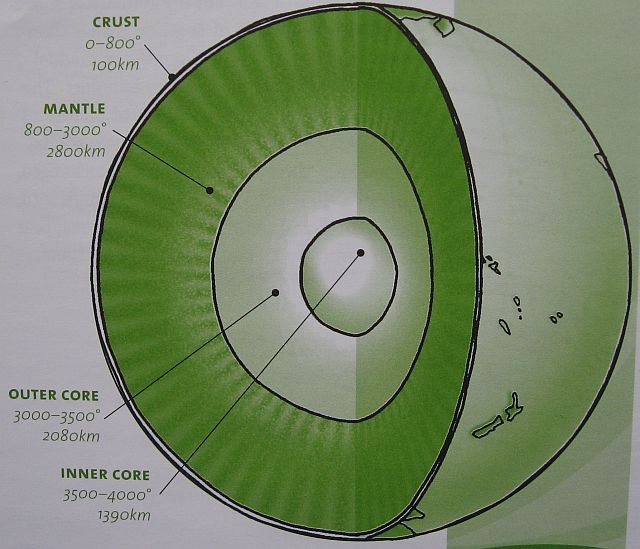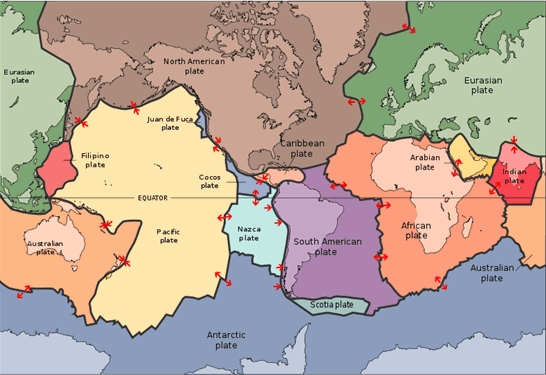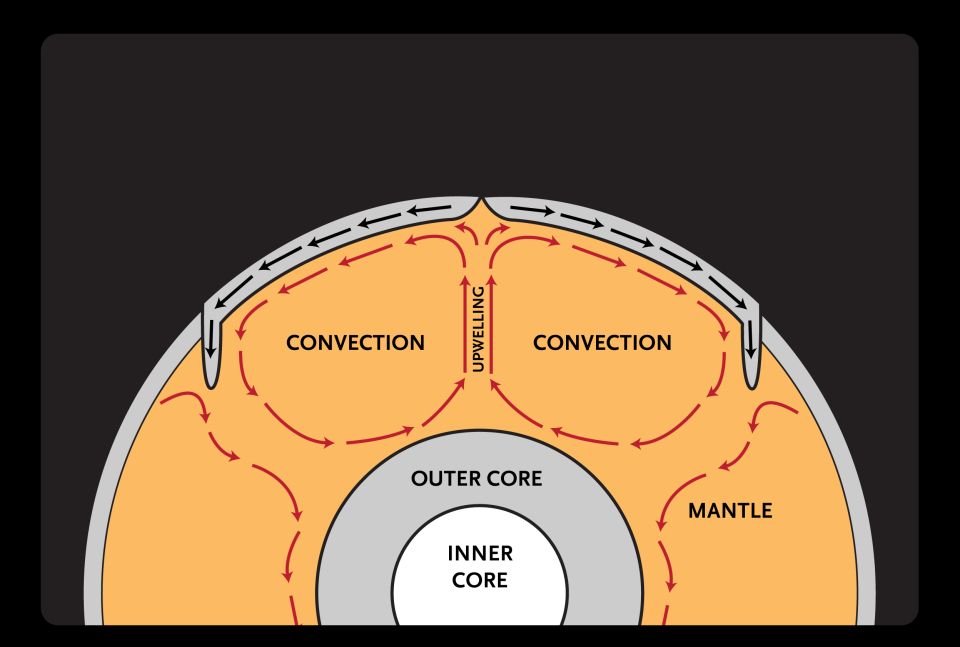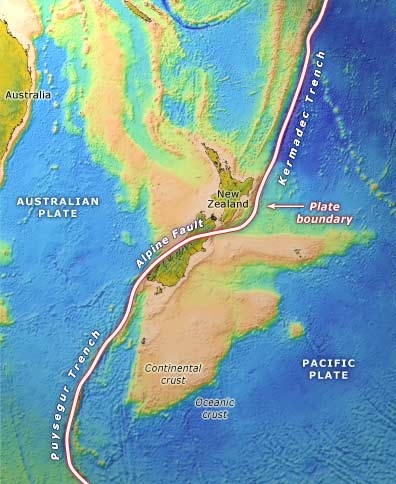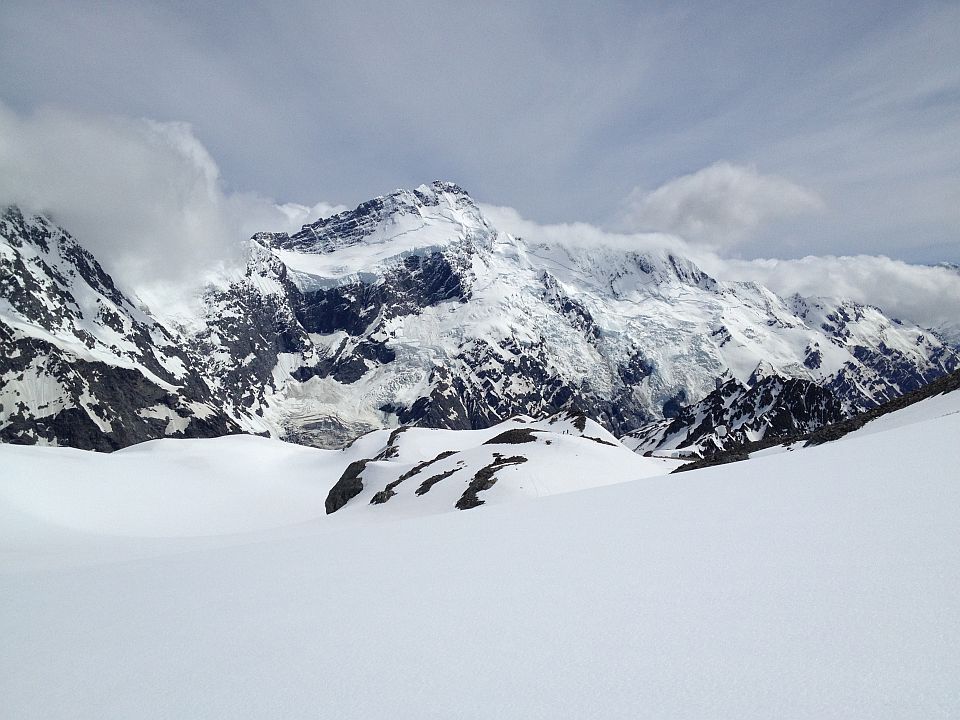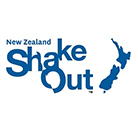Earth’s structure
The Earth is a spherical, rocky structure made up of several main layers.
- Inner core - At its centre is a solid, extremely hot and dense inner core thought to be made of iron.
- Outer core - The inner core is surrounded by an outer core of only slightly cooler liquid metal.
- Mantle - Around the core is the thickest and still very hot layer, the mantle. Magma is very hot molten rock that is formed by partial melting of the mantle
- Crust - Surrounding the mantle is the outermost layer – the Earth’s crust - a thin, cool, and brittle shell.
Plate tectonics
Plate tectonics is an explanation of how the surface of the Earth moves. Continents are sitting on huge chunks of the Earth’s crust called tectonic plates. These tectonic plates continuously move, jostling each other like huge chunks of ice packed together in an ice floe.
Convection currents
Heat generated in the Earth’s core causes super-hot convection currents to circulate in the Earth’s mantle. The movement of heat within the mantle is the main cause of tectonic plate movement (sometimes called continental drift).
The Earth’s crust is quite thin compared with the other layers. The rocks of the crust act like a lid on a jar, keeping the mantle contained beneath the Earth’s surface.
Plate boundaries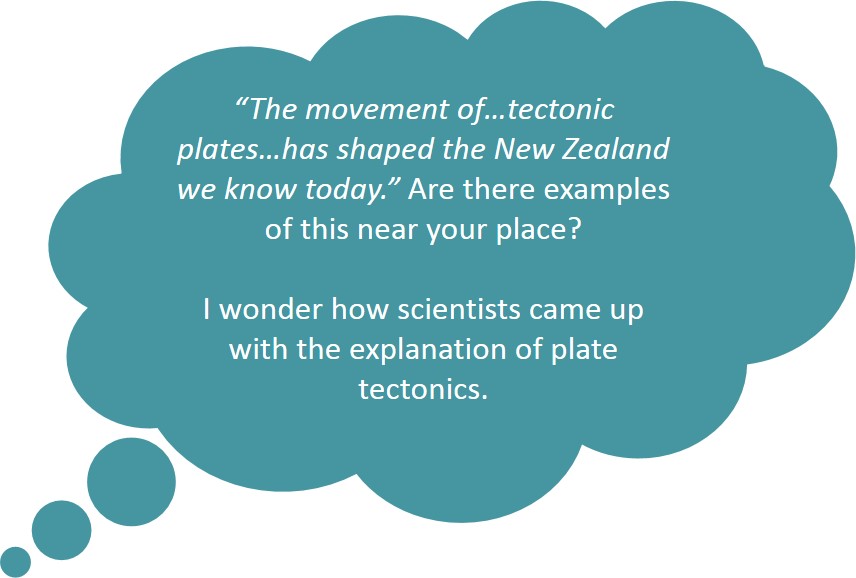
At the edge of the tectonic plates one of three processes can occur:
Divergent boundary
Also known as a spreading boundary, where two plates move apart allowing magma to rise from inside the Earth to fill in the gap. The two plates move away from each other like two conveyor belts moving in opposite directions. This can create rift valleys on land or ocean ridges on the seafloor (e.g. the Atlantic Ocean).
Convergent boundary
Where two plates are colliding. Different things will happen depending on what type of plates are colliding:
- If the plates are continental plates they are of the same density so neither plate can over-ride the other and the landmasses buckle and fold, creating mountain ranges.
- If the plates are both oceanic plates then island arcs or basins can form.
- If an oceanic plate collides with a continental plate the denser oceanic plate will be subducted under the continental plate.
Transform boundary
A transform boundary occurs where two plates slide against each other in a shear movement. But rather than sliding smoothly, the plates build up tension then release the tension with a burst of movement. This movement is felt as an earthquake.
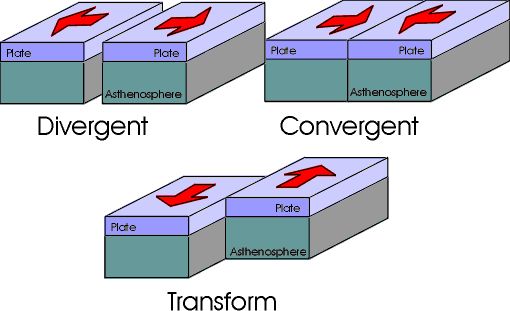
Plate Tectonics in New Zealand
New Zealand is located on the edge of two tectonic plates, the Indo-Australian and the Pacific plates. This position makes New Zealand geologically active with frequent earthquakes, geothermal areas and volcanoes. The movement of these two tectonic plates forms the New Zealand landscape that we know and love.
- To the east of the North Island the Pacific plate is being forced under the Indo-Australian plate (convergent boundary - subduction).
- In the South Island the two plates push past each other sideways (transform boundary).
- To the south of New Zealand the Indo-Australian plate is being forced under the Pacific plate (convergent boundary - subduction).

